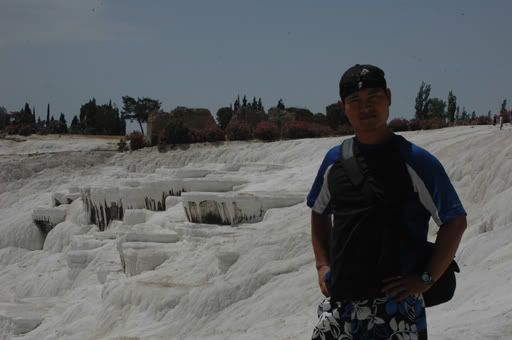
We left Fethiye on a short bus ride to reach the very small town of Pamukkale which literally means Cotton Castle due to the gleaming white calcium formations (travertine pools) that are present here. Pamukkale was formed when warm calcium-rich mineral water cascaded over the cliff edge, cooling and depositing its calcium in the process. The calcium built natural shelves, pools and stalactites in which tourists once were able to splash and soak in. Unfortunately the tourist boom in the 1990s brought so many tourists that the travertine pools and water supply were threatened and the calcium deposits started to turn yellow due to the sun tan lotion that tourists would wear before going into the pools. As a result, today tourists are not allowed into the travertine pools themselves but have a designated path along the very top of cotton castle where they can walk in the waters bare foot as they make their way down the hill.
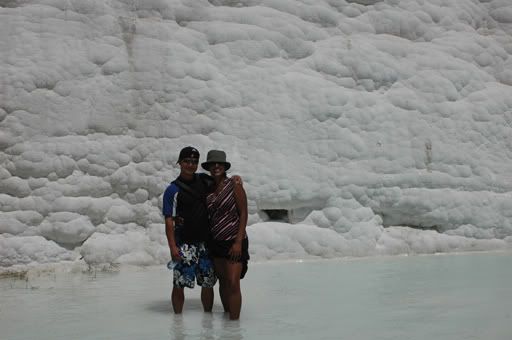
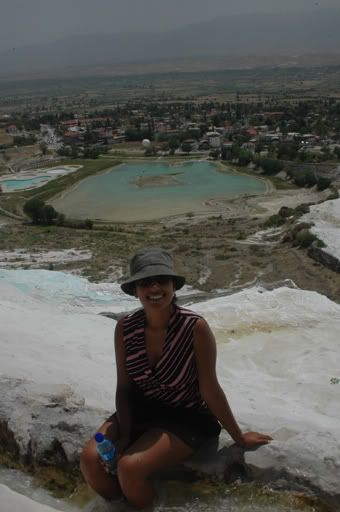
Chris and I had seen many familiar pics of Pamukkale in postcards and books before arriving here and were saddened by the damage that has occurred to this beautiful place as a result of tourism. The image of the castle is still something else as when you first enter the town, the first thing you see is what looks like this large hill of white snow in the middle of this small town gleaming bright due to the blazing heat. Unfortunately though, you can see where tourists have left their damage as some areas have turned a gaudy yellow color (kind of looks like snow that has been peed in) and the water levels have dramatically reduced to what was once there as evidenced by past photos and books.
We spent an entire day up in Cotton Castle and also had a chance to visit the nearby ancient spa city of Hierapolis, that the Romans built above the travertine pools to take advantage of the water’s curative powers. The waters here are thought to be beneficial to humans in curing ailments and making one’s skin look younger and more vibrant. The centre of Hierapolis is thought to have been the sacred pool associated with the Temple of Apollo. Today, this area is the Pamukkale Thermal where visitors are allowed to swim in the popular bathing pool there which is littered with fragments of marble columns lending to the belief that this may be where the sacred pool of the Temple of Apollo may have been. We were able to walk around the swimming pool area but were not willing or eager to pay 18 lira per person ($13.63 Cdn) to take a dip in a very small bathing area with too many tourists.
We were far more interested in the rest of this ancient spa city that was built here and of most interest were the Arch of Domitian, the Necropolis and the spectacular Roman theatre. (see pictures below for more information)
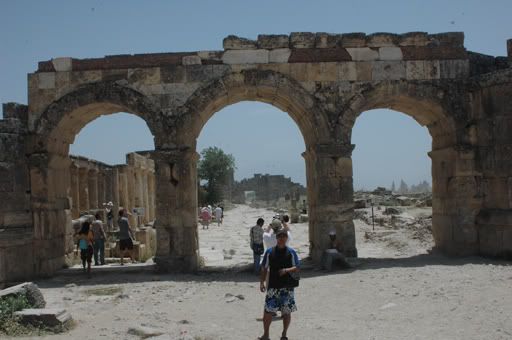

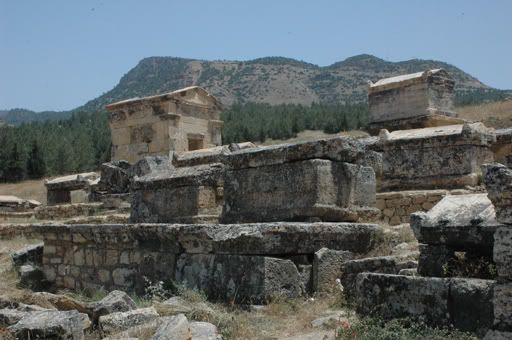
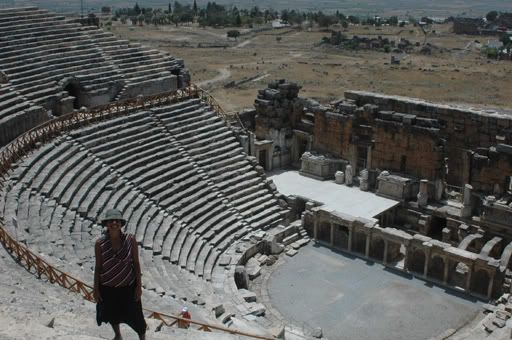
The town of Pamukkale itself where the pensions and hotels are is very, very small and there is not much else to do here except visit the travertine pools and Hierapolis. We would suggest coming here early in the morning if possible, spending the day exploring the two main sites and then heading on an overnight bus, if possible, to the next destination .If you have to spend a night here, we suggest staying at Yoruk Hotel which was a pleasant and clean hotel with a very large swimming pool and sauna.
Our days in Turkey are coming to an end soon and we have one more place to visit before heading to Istanbul to catch our flight to country #12. We are leaving what some say, the “best” for last, Ephesus – the best preserved classical city in the eastern Mediterranean and a must see for ALL tourists visiting Turkey.
1 comment:
just like snow, i don't recommend eating yellow calciium deposits.
Post a Comment